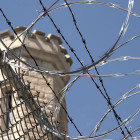2013 National Youth Violence Prevention Week Underway
|
This week, the National Crime Prevention Council (NCPC) is celebrating National Youth Violence Prevention Week, which seeks to raise awareness of methods that may deter juveniles from engaging in violent activities. The weeklong observance is an initiative of the National Association of Students Against Violence Everywhere (SAVE). Each day this week, the SAVE Youth Advisory Board will highlight a specific youth violence prevention technique, which runs the gamut from promoting tolerance and respect in communities to conflict management strategies. Sponsors for this year’s event include the American School Counselor Association, theAssociation for Conflict Resolution, Youth Service America and the National Association of Youth Courts. On the official SAVE website, the organization lists numerous National Youth Violence Prevention week awareness activities, as well as strategies for building community coalitions.




